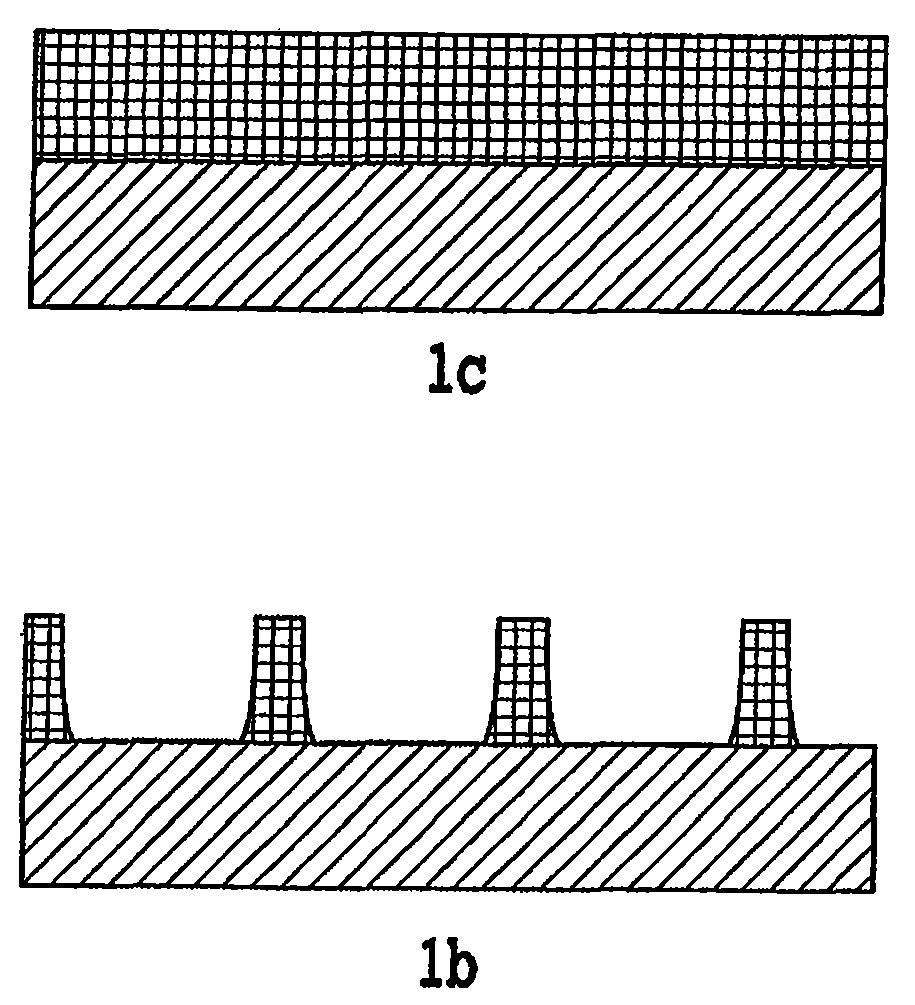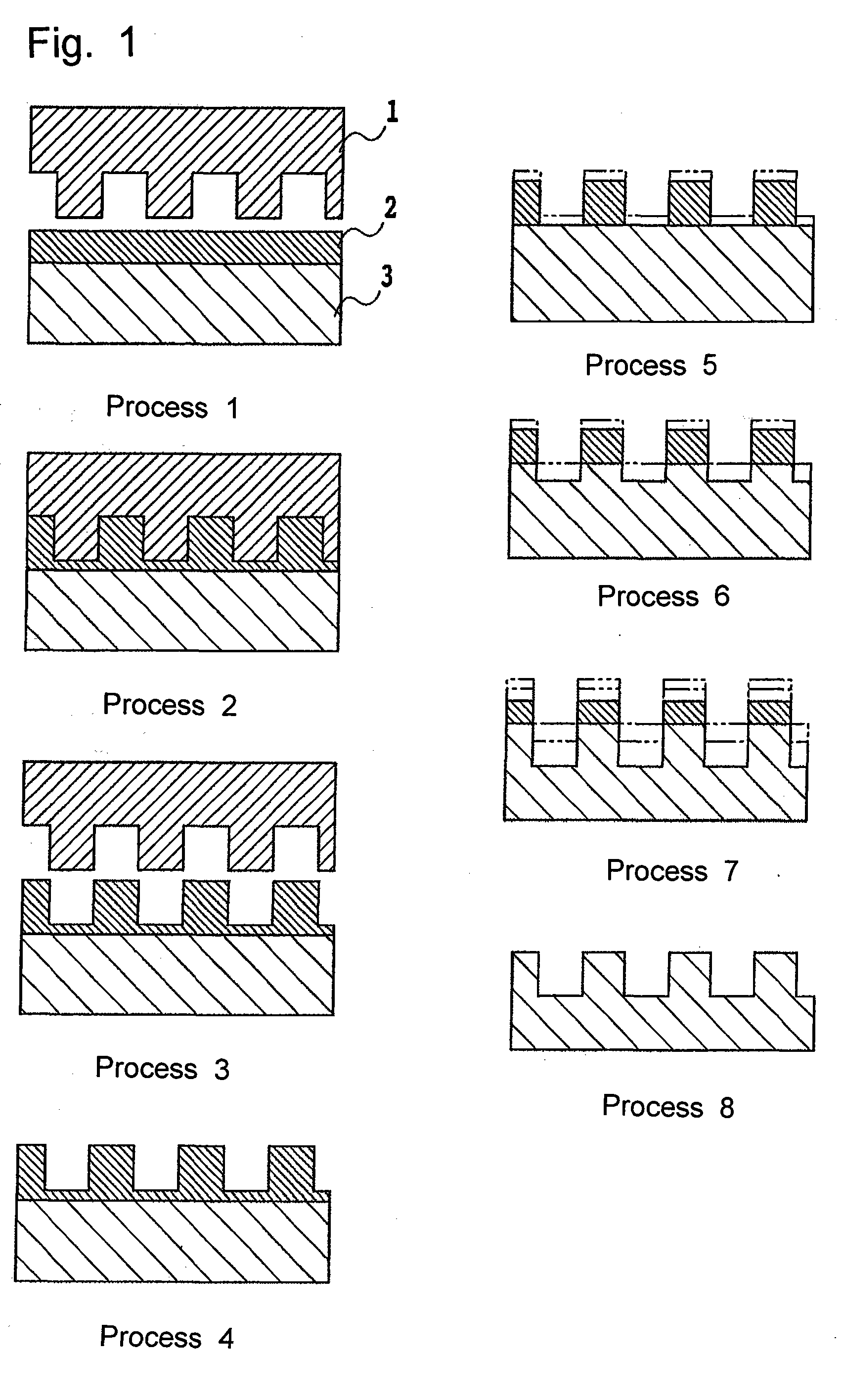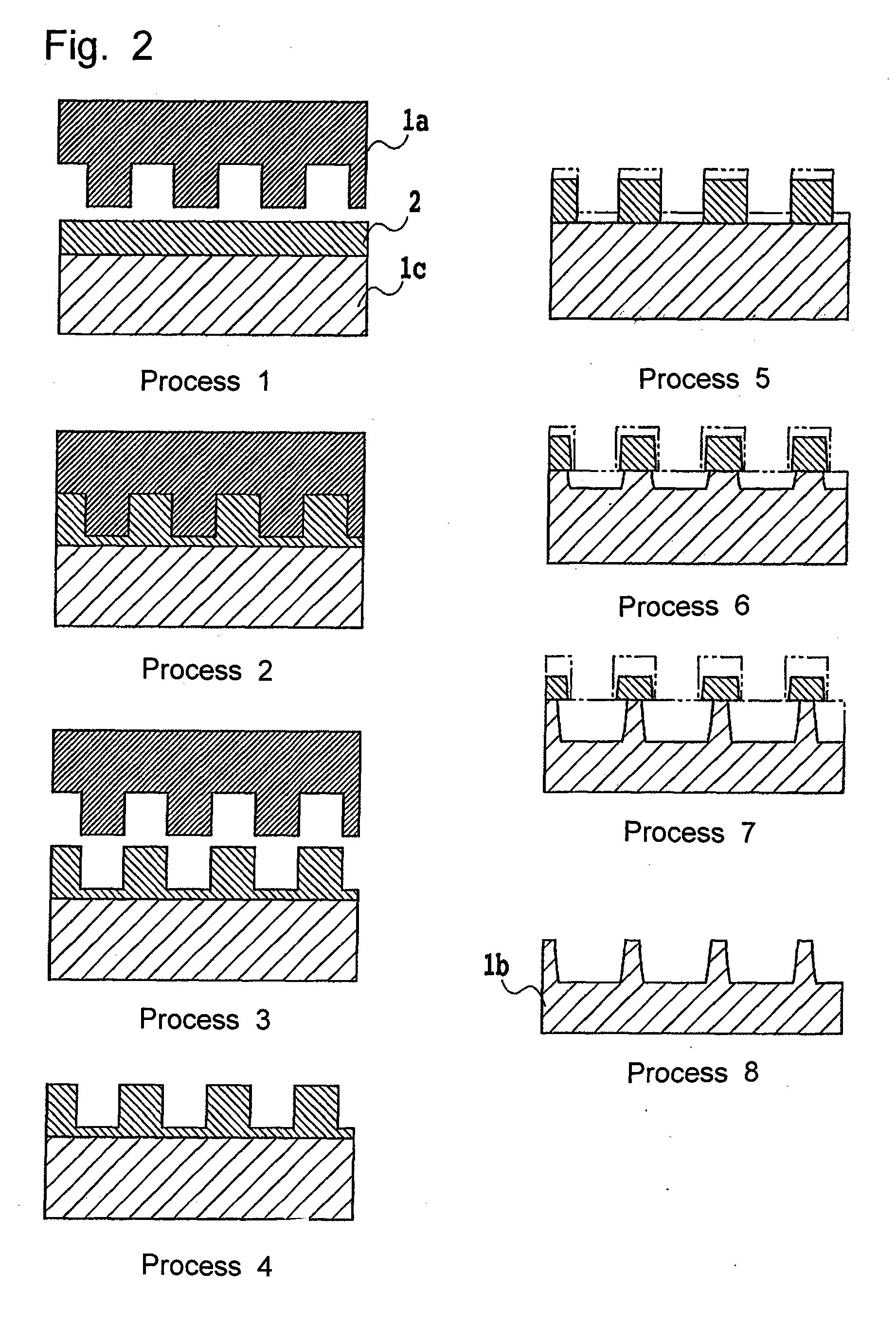Nano-imprinting mold, method of manufacture of nano-imprinting mold, and recording medium manufactured with nano-imprinting mold
a nano-imprinting mold and manufacturing method technology, applied in the field of nano-imprinting molds, can solve the problems of low throughput, limit to pattern fineness, and high cost of equipment, and achieve the effect of increasing the ratio of depression line width, increasing the signal intensity, and increasing the resistan
- Summary
- Abstract
- Description
- Claims
- Application Information
AI Technical Summary
Benefits of technology
Problems solved by technology
Method used
Image
Examples
example 1
[0037]First, a quartz glass parent mold 1a was prepared as shown in process 1 of FIG. 2. As this parent mold 1a, an EB photolithography method was employed, in which resist was applied to the surface of quartz glass and EB exposure was used to form a pattern, after which dry etching was performed to form a relief pattern in the quartz glass; by this means a quartz glass mold for discrete track media was fabricated having concentric lines and spaces with line widths of 80 nm, space widths of 80 nm, and depths of 100 nm, as well as servo information pattern in some portions, over the entire surface of a donut-shaped disc of outer diameter 65 mm and inner diameter 20 mm. This parent mold was subjected to release film formation treatment to form a monolayer release film on the parent mold surface, by heating, evaporating, and causing a polymer-structure thin film material having a water-repellent base to be evaporation-deposited onto and react with the substrate surface in vacuum.
[0038]...
example 2
[0043]Using the method of Example 1, and employing a child mold with the line width to space width ratio varied, at a pitch of 160 nm and both under conditions with no side etching and under three sets of conditions to cause side etching, four types of discrete track media were fabricated with the line width / space width set to 80 nm / 80 nm, 100 nm / 60 nm, 120 nm / 40 nm, and 140 nm / 20 nm. The discrete track media thus fabricated were evaluated by measuring on-track magnetic recording signals. As a result, signals could be obtained from all four types of media. The larger the line width, the stronger were the signals, and satisfactory S / N ratios could be obtained.
example 3
[0044]As shown in FIG. 4, a child mold was fabricated similarly to Embodiment 1, using a child mold substrate 1c prepared by sputter deposition of Ti film onto the surface of quartz glass to a thickness of 100 nm. SF6 was used as the etching gas. Etching of only the Ti film was performed, stopping at the quartz glass surface; satisfactory flat planes were obtained at the bottom portions of the depressions. Upon using this mold, similarly to Example 1, to perform nano-imprinting of a resist film (resin film) 2, a pattern with high dimensional precision could be obtained, with no sagging at the protruding portions of the resist film.
PUM
| Property | Measurement | Unit |
|---|---|---|
| width | aaaaa | aaaaa |
| space widths | aaaaa | aaaaa |
| Tg | aaaaa | aaaaa |
Abstract
Description
Claims
Application Information
 Login to View More
Login to View More - R&D
- Intellectual Property
- Life Sciences
- Materials
- Tech Scout
- Unparalleled Data Quality
- Higher Quality Content
- 60% Fewer Hallucinations
Browse by: Latest US Patents, China's latest patents, Technical Efficacy Thesaurus, Application Domain, Technology Topic, Popular Technical Reports.
© 2025 PatSnap. All rights reserved.Legal|Privacy policy|Modern Slavery Act Transparency Statement|Sitemap|About US| Contact US: help@patsnap.com



